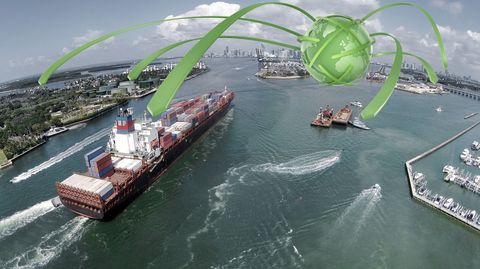We live in a technological age and, although most goods are still traded physically, a growing proportion is now delivered digitally.
This has opened up an interesting and ongoing debate about whether or not customs duties should apply to digital products in the same way they would to physical items.
Moratorium dating back 22 years
In December 2019, members of the World Trade Organization (WTO) voted to renew the global prohibition on applying customs duties to cross-border data flows.
This moratorium originally dates back to 1998, when the WTO decided to ban all nations from adding customs levies to electronic transmissions.
However, this was well before the explosion in digital trade that has come about as a result of widespread internet use. Importantly, it was also before the coronavirus pandemic and the worldwide boom in consumption of digital products in lieu of their physical counterparts for safety reasons.
Consequently, debate is now raging once again as to whether the moratorium should be reversed at the next WTO meeting to make the same rules apply to e-products as are applicable to those physically transferred from place to place.
On the side of change
India and South Africa are among the nations that have circulated a communication to the WTO General Council arguing for a reversal of the moratorium, insisting that it is "catastrophic" for the economic growth of developing countries and the attainment of sustainable development goals.
They claim that as net importers of digital products, developing nations are losing potential tariff revenues and could miss out further as technologies such as 3D printing come increasingly to the fore.
A research paper from the United Nations Conference on Trade and Development also estimates that the potential revenue loss to developing countries as a result of the moratorium was $10 billion (€8.5 billion) in 2017 alone.
At the same time, high-income nations only experienced a revenue loss of $289 million, suggesting the developing world has the potential to generate forty times more tax every year by imposing customs duties on electronic transmissions.
It therefore argues that trade in intangibles should be treated as trade in goods and so different from trade in services.
On the side of the moratorium remaining
At its last meeting in December 2019, the WTO concluded that the estimated tariff revenue loss due to the moratorium is not significant because falling physical imports are associated with reducing tariff revenues. It therefore decided that the law should remain in place.
The International Chambers of Commerce is also against any reversal, arguing that this could wreak havoc in the online economy.
Secretary-general John WH Denton said: "The potential for tariffs to break the global internet as we know it today is real."
In June 2020, nations including Australia, Canada, Hong Kong, Thailand and Uruguay issued their own communication in support of the moratorium, citing a paper from the Organization for Economic Co-operation and Development (OECD).
They claim that the benefits of duty-free electronic transmissions "outweigh the potential forgone government revenues" and recommend that this be taken into consideration when deciding on any amendments to the law.
The Global Services Coalition (GSC) also commended the WTO for extending the moratorium and urged its members to make it permanent at their next meeting.
In an article for The City, the GSC states that allowing information to flow duty-free "has helped give rise to a dramatic expansion in the depth and breadth of digital trade".
The organization adds: "Information flows are now more central to the development of world trade than at any previous time. Abandoning an approach that has worked so well for so long would be a mistake."
It also claims the estimated impact on developing countries is overestimated and raises the question as to how governments could determine fair rules for collecting custom duties on electronic transmissions.
"There would be a need to identify the origin of the cross-border data transfers that would be transformed into physical products in the country of destination. This would be very difficult given the dynamic nature of data flows," the article points out.
The WTO should have been set to decide an outcome on the moratorium in June 2020, but the WTO Ministerial Conference (MC12) was postponed due to coronavirus.
We will now have to wait until 2021 to see if the governing body opts to keep the law in place or rings in a new set of tariffs.






